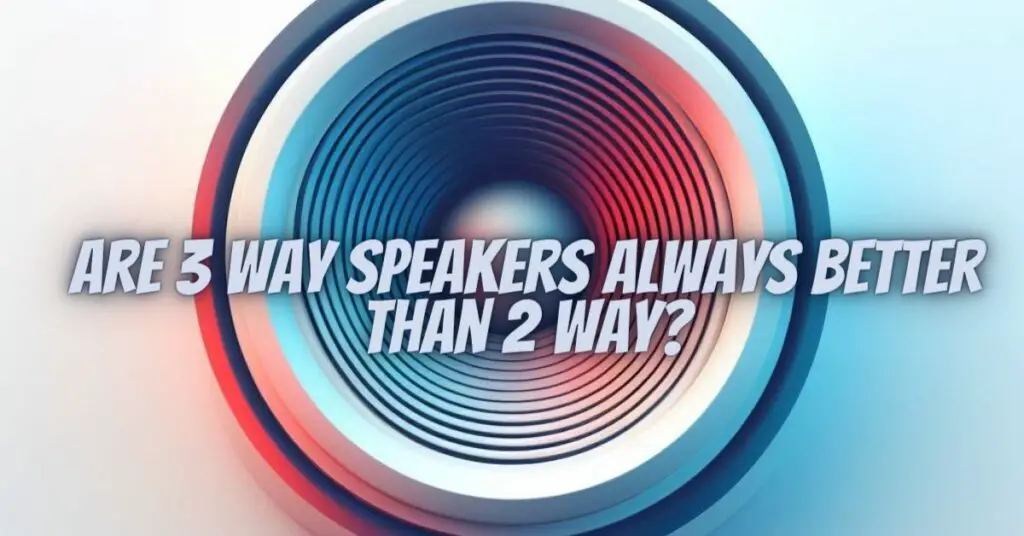3-way speakers are often seen as being better than 2-way speakers, but is this always the case? There are a number of factors to consider when choosing between 2-way and 3-way speakers, including the quality of the speakers, the type of music you listen to, and your budget.
What are 2-way and 3-way speakers?
A 2-way speaker system has two drivers: a woofer and a tweeter. The woofer is responsible for reproducing the low and mid frequencies, while the tweeter reproduces the high frequencies. A 3-way speaker system has three drivers: a woofer, a midrange driver, and a tweeter. The woofer and tweeter function in the same way as they do in a 2-way system, but the midrange driver is responsible for reproducing the mid frequencies.
Advantages of 3-way speakers
There are a number of advantages to 3-way speakers over 2-way speakers. First, 3-way speakers can often reproduce a wider range of frequencies than 2-way speakers. This is because the midrange driver can handle the mid frequencies, freeing up the woofer and tweeter to focus on the low and high frequencies, respectively. This can result in a more accurate and realistic soundstage.
Second, 3-way speakers can often produce higher sound pressure levels (SPLs) than 2-way speakers. This is because the midrange driver can help to improve the efficiency of the overall system. This can be important if you need speakers that can be very loud, such as for a home theater system or a live performance.
Third, 3-way speakers can often produce a more detailed and nuanced sound than 2-way speakers. This is because the midrange driver can reproduce the mid frequencies more accurately than the woofer or tweeter. This can be important for genres of music that rely heavily on the mid frequencies, such as classical music or jazz.
Disadvantages of 3-way speakers
There are a few disadvantages to 3-way speakers over 2-way speakers. First, 3-way speakers are often more expensive than 2-way speakers. This is because they have an additional driver and crossover.
Second, 3-way speakers are often larger than 2-way speakers. This is because they need to accommodate the additional driver. This can be a problem if you have limited space.
Third, 3-way speakers can be more difficult to design and build than 2-way speakers. This is because the crossover needs to be carefully tuned to ensure that the three drivers work together seamlessly. If the crossover is not designed properly, the sound quality can suffer.
Are 3-way speakers always better than 2-way speakers?
So, are 3-way speakers always better than 2-way speakers? The answer is not necessarily. 3-way speakers do have a number of advantages over 2-way speakers, but they also have some disadvantages. Ultimately, the best way to decide which type of speaker is right for you is to listen to a variety of speakers and see which ones sound best to you.
When to choose 3-way speakers
3-way speakers are a good choice for people who:
- Need speakers that can reproduce a wide range of frequencies
- Need speakers that can produce high SPLs
- Need speakers that can produce a detailed and nuanced sound
- Are willing to pay more for higher quality speakers
- Have enough space to accommodate larger speakers
When to choose 2-way speakers
2-way speakers are a good choice for people who:
- Are on a budget
- Need speakers that are small and compact
- Do not need speakers that can produce extremely high SPLs
- Are not as concerned with sound quality as they are with price and convenience


